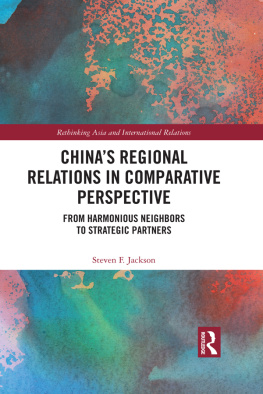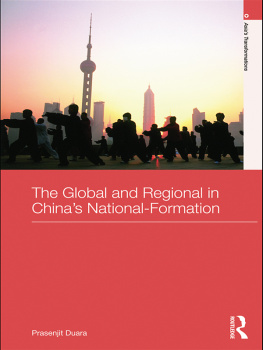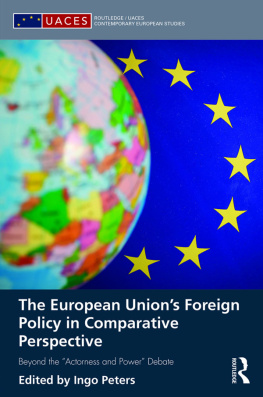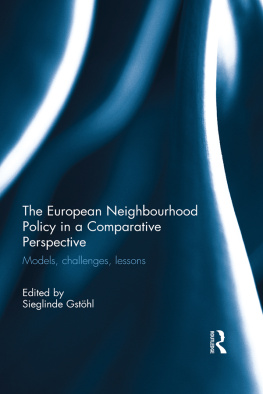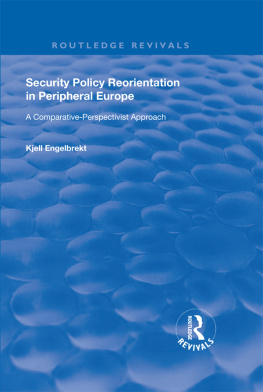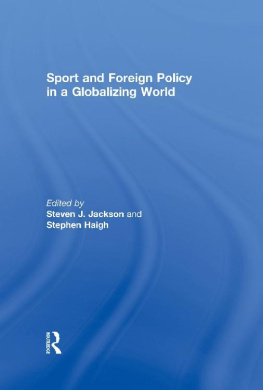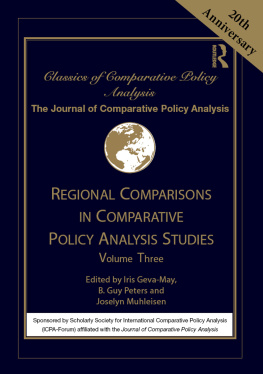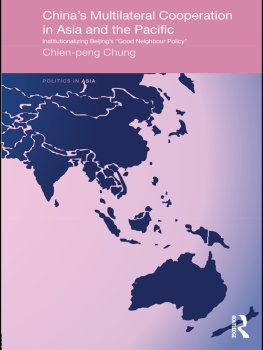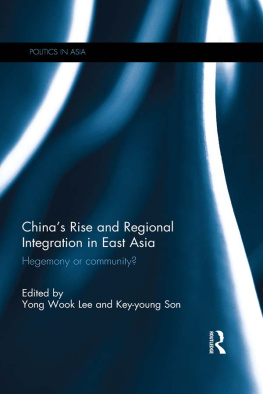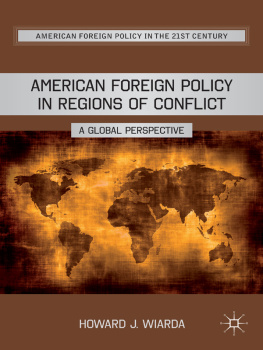Chinas Regional Relations in Comparative Perspective
Chinas relations with its neighbors have evolved since 1949, and in the 21st century, many scholars argue that Chinas rising power has led it to be increasingly domineering over those smaller countries in Northeast, Southeast, Central, and South Asia. The evolution of Chinas regional relations needs to be examined comprehensively, since China counts twenty-seven countries as its neighbors, large and small. While Chinas official policy toward all of these countries is to treat them as good neighbors and partners, some of these relationships have been spectacularly deteriorating, while others have been quietly improving over the last two decades.
Jackson takes a comparative foreign policy approach and compares Chinas status as a regional hegemon with the United States, Russia, India, Brazil, South Africa, and Nigeria. The result is a broader theory as to why regional powers are sometimes intimidating and at other times accommodating.
An important contribution to studies on China, this book will prove useful to scholars and students in Chinese and Asian foreign policy, comparative foreign policy, and international relations.
Steven F. Jackson is a professor of political science. After receiving his bachelors degree in International Relations from Stanford University in 1981, he taught English in Xian China from 198183. He received his Ph.D. from the University of Michigan and joined the faculty at Indiana University of Pennsylvania in 1994. His area of specialization is in Chinese foreign relations, and in particular Chinas regional relationships, such as with East Asia and Africa.
Rethinking Asia and International Relations
Series Editor Emilian Kavalski
Australian Catholic University (Sydney)
This series seeks to provide thoughtful consideration both of the growing prominence of Asian actors on the global stage and the changes in the study and practice of world affairs that they provoke. It intends to offer a comprehensive parallel assessment of the full spectrum of Asian states, organizations, and regions and their impact on the dynamics of global politics.
The series seeks to encourage conversation on:
- what rules, norms, and strategic cultures are likely to dominate international life in the Asian Century;
- how global problems will be reframed and addressed by a rising Asia;
- which institutions, actors, and states are likely to provide leadership during such shifts to the East;
- whether there is something distinctly Asian about the emerging patterns of global politics.
Such comprehensive engagement not only aims to offer a critical assessment of the actual and prospective roles of Asian actors, but also seeks to rethink the concepts, practices, and frameworks of analysis of world politics.
This series invites proposals for interdisciplinary research monographs undertaking comparative studies of Asian actors and their impact on the current patterns and likely future trajectories of international relations. Furthermore, it offers a platform for pioneering explorations of the ongoing transformations in global politics as a result of Asias increasing centrality to the patterns and practices of world affairs.
For a full list of titles in this series, please visit www.routledge.com/Rethinking-Asia-and-International-Relations/book-series/ASHSER1384
Titles
The Guanxi of Relational International Theory
Emilian Kavalski
Chinas Regional Relations in Comparative Perspective
From Harmonious Neighbors to Strategic Partners
Steven F. Jackson
First published 2018
by Routledge
2 Park Square, Milton Park, Abingdon, Oxon OX14 4RN
and by Routledge
711 Third Avenue, New York, NY 10017
Routledge is an imprint of the Taylor & Francis Group, an informa business
2018 Steven F. Jackson
The right of Steven F. Jackson to be identified as author of this work has been asserted by him in accordance with sections 77 and 78 of the Copyright, Designs and Patents Act 1988.
All rights reserved. No part of this book may be reprinted or reproduced or utilized in any form or by any electronic, mechanical, or other means, now known or hereafter invented, including photocopying and recording, or in any information storage or retrieval system, without permission in writing from the publishers.
Trademark notice: Product or corporate names may be trademarks or registered trademarks, and are used only for identification and explanation without intent to infringe.
British Library Cataloguing-in-Publication Data
A catalogue record for this book is available from the British Library
Library of Congress Cataloging-in-Publication Data
A catalog record for this book has been requested
ISBN: 978-1-409-45589-9 (hbk)
ISBN: 978-1-315-57165-2 (ebk)
Typeset in Times New Roman
by Apex CoVantage, LLC
To my wife, Dr. Andrea M. Lopez, who had to listen to all of this, repeatedly.
This book represents a project that has been a very, very long time in development. It began in 1995 with a conference organized at the East-West Center in Honolulu on The Modernization of Chinas Diplomacy, organized by Lin Zhimin and my good friend Wang Jianwei. I was assigned to examine Chinas Good Neighbor Policy and wound up also writing a theoretical piece on the modernization of diplomacy as well. Sadly, that volume never came together, but I did not give up on the idea of examining Chinas Good Neighbor Policy. The pressures of teaching, tenure, promotion, then serving as a department chair may have put the project on hiatus, but it remained an area of interest, reading and research.
Research for this book was conducted at the Library of Congress and was facilitated by the staff of the Asian Reading Room. Additional research for this book has been in quite a few libraries around the world, including the University of Pittsburgh, Stanford University, and the University of Hawaii at Manoa.
Portions of this book have been presented over the years, primarily at the Annual Meetings of the International Studies Association, and I thank all of the discussants and fellow panelists whose comments have greatly improved this modest work. Portions of were previously published as Does China Have A Monroe Doctrine? in Strategic Studies Quarterly , Winter 2016. Indiana University of Pennsylvania granted me a sabbatical in Spring 2017, which was critical to finishing the manuscript. Most of all, I thank my wife, Dr. Andrea M. Lopez, who has been supportive throughout the project and whose ideas and reactions have served as a first forum for consideration. Errors of interpretation are, of course, my fault.
A note on names
Chinese and Japanese names in this book are rendered in traditional order: surname, then given name. Chinese, Russian, and Hindi words and phrases that are particularly important are also rendered in original characters/scripts and appropriate Romanization. The citations for English-language works of authors with Chinese names uses the surname only. Works in Chinese or translated from Chinese use the full name for clarification.
Some place names carry political implications. In the case of disputed territories, a neutral term such as Spratlys or Paracels is used where available and commonly known. In other cases, both are referenced: Senkaku/Diaoyu, without any significance of the order. Burma versus Myanmar became an issue in 1989 when the military government there changed the official English name for the country. The issue is less distinct in that country, where the two terms are linguistically related, but the United States and several other countries continue to use the term Burma even though the government now dominated by Aung San Suu Kyi finds either term acceptable. This study will use Burma until 1989 and then Myanmar, just as it uses Siam until 1939, and then Thailand. The status of the Republic of China/Taiwan is not a major focus of this book, but occasionally, it is necessary for clarity to use mainland China and Taiwan to distinguish the two, without prejudice to their legal relationship. In discussing most of the post-Soviet republics of Central Asia, the terms Uzbekistani, Kyrgyzstani, Tajikistani, and Kazakhstani are all used to denote the adjectival form of these states and their citizens. The ethnic groups associated with these regions are Uzbeks, Kyrgyz, Tajiks, etc. The choice between Uyghur and Uighur for the ethnic group in Xinjiang divides scholars, and this book will use the much more common Uighur because readers are more likely to be familiar with it.

